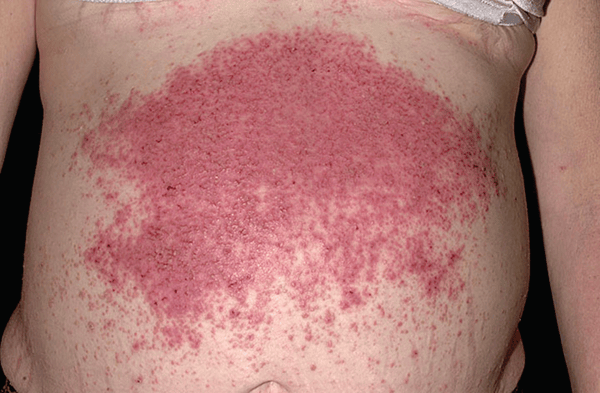Everything You Need To Brush Up On For Celiac Disease Awareness Day
.png)
National Celiac Disease Awareness Day is coming up on September 13th. We've pulled some high-yield information from the Gastroenterology section of our Internal Medicine Core to help you tackle your review of celiac disease.
Prevalence Of Celiac Disease
- It occurs in up to 1% of the population in most countries.
- Celiac disease (gluten-sensitive enteropathy; previously celiac sprue, nontropical sprue) is one of the most commonly undiagnosed disorders.
What To Know About Celiac Disease
Celiac disease is an autoimmune intestinal disorder in which there is an altered gut mucosal response to dietary gluten, which is in wheat, barley, malt, and rye. This results in small bowel villous atrophy and crypt hypertrophy with resulting malabsorption. It can cause growth retardation in children and is associated with HLA-DQ2 and HLA-DQ8. Remission may occur during adolescence, and then recur. If detected early, the patient may have only mild symptoms such as bloating and loose stools.
Extraintestinal manifestations of celiac disease:
-
- Iron deficiency anemia (the most common presentation; iron is absorbed mostly in the duodenum): low Hgb, mean corpuscular volume (MCV), and ferritin
- Abnormal serum aminotransferases
- Dermatitis herpetiformis
- Osteoporosis
- Osteomalacia
- Neuropsychiatric symptoms
- Dental enamel defects
Primary intestinal lymphoma is a rare, late complication of celiac disease. Patients with celiac disease are also at increased risk of developing Type 1 DM and Addison disease. Deficiencies caused by celiac disease:
-
- Iron
- Folic acid
- Ca2+
- Vitamin D
- Vitamin K
- Vitamin B12 (rarely)
There is a wide spectrum of presentations. Patients often have few to no GI symptoms and may present with only a psychiatric disorder, osteomalacia, or a purulent pustular rash.
What Is Dermatitis Herpetiformis?
Dermatitis herpetiformis is a manifestation of celiac disease. It is characterized by intensely itchy vesiculopapular eruptions on the face, trunk (see below), buttocks, sacrum, and extensor surfaces of elbows and knees.
 Image depicting dermatitis herpetiformis from the Gastroenterology section of our Internal Medicine Core
Image depicting dermatitis herpetiformis from the Gastroenterology section of our Internal Medicine Core
Most patients with dermatitis herpetiformis do not have abdominal symptoms, although 85% have the characteristic findings on intestinal wall biopsy.
How To Diagnose Celiac Disease
Diagnosis of celiac disease includes these 4 criteria:
1) Evidence of malabsorption (e.g., steatorrhea, weight loss, iron deficiency anemia)
2) Positive IgA antitissue transglutaminase antibody test (≥ 90% sensitivity) or positive antiendomysial antibody test
3) A positive response to a gluten-free diet (clinical, chemical, histological, and immunologic)
4) Abnormal small bowel biopsy to clinch the diagnosis
The Best Antibody Tests Are:
-
-
- Antitissue transglutaminase (tTG) antibody
- IgA antiendomysial Ab (but not good with IgA deficiency; therefore, additionally obtain quantitative IgA levels)
-
Antigliadin Abs are sensitive but not specific and are superseded by tTG antibody or antiendomysial Ab. Because IgA deficiency occurs in 1–2% of the U.S. population, if IgA tTG antibody is negative in the setting of a strong suspicion of celiac disease, check serum IgA levels. These antibody tests can also be useful for identifying latent celiac disease or as a measure of compliance with the gluten-free diet.
If there is a high suspicion for celiac disease, diagnose using serology in conjunction with early EGD with small bowel biopsy. HLA typing may also have utility; a patient who is negative for DQ2 and/or DQ8 does not have celiac disease.
Note: The small bowel biopsy results are characteristic but not pathognomonic, since you may see similar villous atrophy with hypogammaglobulinemia (a.k.a. hypogammaglobulinemic sprue), SIBO, lactose intolerance, giardiasis, peptic duodenitis, and tropical sprue! Many small bowel disease processes can cause villous atrophy.
Treat celiac disease with a gluten-free diet.
 You can read more about celiac disease in the IM Core, available in both Print and Digital formats
You can read more about celiac disease in the IM Core, available in both Print and Digital formats
For more on the treatment of celiac disease, see the Gastroenterology section of our Internal Medicine Core. The Core is a great refresher for boards or for your daily practice. We'll let you know about other important awareness days and where to go in the Core to brush up.
Already have the Core? Start on page 14-29 in Book 5 to brush up on the treatment of celiac disease and other malabsorption disorders.
Have the digital Internal Medicine Core? You can search specific terms like celiac disease to bring up all the relevant pages.


